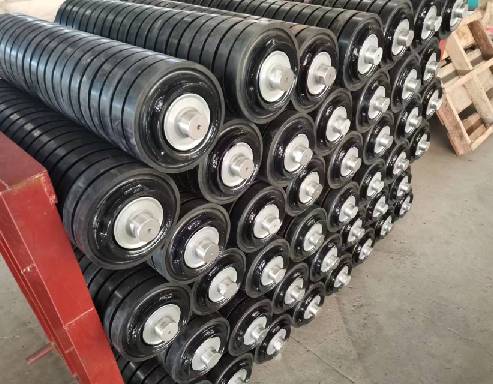 Afrikaans
Afrikaans  Albanian
Albanian  Amharic
Amharic  Arabic
Arabic  Armenian
Armenian  Azerbaijani
Azerbaijani  Basque
Basque  Belarusian
Belarusian  Bengali
Bengali  Bosnian
Bosnian  Bulgarian
Bulgarian  Catalan
Catalan  Cebuano
Cebuano  Corsican
Corsican  Croatian
Croatian  Czech
Czech  Danish
Danish  Dutch
Dutch  English
English  Esperanto
Esperanto  Estonian
Estonian  Finnish
Finnish  French
French  Frisian
Frisian  Galician
Galician  Georgian
Georgian  German
German  Greek
Greek  Gujarati
Gujarati  Haitian Creole
Haitian Creole  hausa
hausa  hawaiian
hawaiian  Hebrew
Hebrew  Hindi
Hindi  Miao
Miao  Hungarian
Hungarian  Icelandic
Icelandic  igbo
igbo  Indonesian
Indonesian  irish
irish  Italian
Italian  Japanese
Japanese  Javanese
Javanese  Kannada
Kannada  kazakh
kazakh  Khmer
Khmer  Rwandese
Rwandese  Korean
Korean  Kurdish
Kurdish  Kyrgyz
Kyrgyz  Lao
Lao  Latin
Latin  Latvian
Latvian  Lithuanian
Lithuanian  Luxembourgish
Luxembourgish  Macedonian
Macedonian  Malgashi
Malgashi  Malay
Malay  Malayalam
Malayalam  Maltese
Maltese  Maori
Maori  Marathi
Marathi  Mongolian
Mongolian  Myanmar
Myanmar  Nepali
Nepali  Norwegian
Norwegian  Norwegian
Norwegian  Occitan
Occitan  Pashto
Pashto  Persian
Persian  Polish
Polish  Portuguese
Portuguese  Punjabi
Punjabi  Romanian
Romanian  Russian
Russian  Samoan
Samoan  Scottish Gaelic
Scottish Gaelic  Serbian
Serbian  Sesotho
Sesotho  Shona
Shona  Sindhi
Sindhi  Sinhala
Sinhala  Slovak
Slovak  Slovenian
Slovenian  Somali
Somali  Spanish
Spanish  Sundanese
Sundanese  Swahili
Swahili  Swedish
Swedish  Tagalog
Tagalog  Tajik
Tajik  Tamil
Tamil  Tatar
Tatar  Telugu
Telugu  Thai
Thai  Turkish
Turkish  Turkmen
Turkmen  Ukrainian
Ukrainian  Urdu
Urdu  Uighur
Uighur  Uzbek
Uzbek  Vietnamese
Vietnamese  Welsh
Welsh  Bantu
Bantu  Yiddish
Yiddish  Yoruba
Yoruba  Zulu
Zulu conveyor head pulley
Understanding the Conveyor Head Pulley An Essential Component in Material Handling Systems
The conveyor head pulley plays a crucial role in material handling systems across various industries, effectively serving as the drive component that facilitates the movement of materials along conveyor belts. This key element is located at the end of the conveyor system and is primarily responsible for guiding the belt, ensuring its stability, and providing the necessary traction to move materials from one point to another.
A typical conveyor system comprises a belt that wraps around several pulleys, including idler pulleys and the head pulley. While the idler pulleys support the belt and maintain its tension, the head pulley functions as the driving force. It is usually connected to a motor via a drive mechanism, which imparts motion to the conveyor belt. This motion enables a smooth transfer of materials, whether in a manufacturing facility, warehouse, or distribution center.
One of the main functions of the head pulley is to provide the necessary friction for belt movement. The surface of the head pulley is typically textured or coated to enhance friction, which is vital for effective material transport. Without adequate friction, the belt would slip, leading to inefficient operation and potential damage to both the belt and the material being transported.
The design of a conveyor head pulley may vary depending on the specific application and the type of materials being handled. For instance, heavy-duty applications might require larger, more robust pulleys made from durable materials, capable of withstanding significant load and wear. In contrast, lighter applications may utilize smaller pulleys that offer sufficient traction without unnecessary weight.
conveyor head pulley

Another important aspect of head pulleys is their ability to facilitate the directional change of the conveyor belt. As the material is delivered to the head of the conveyor, the pulley rotates and redirects the belt back toward the loading area. This design helps in maintaining a continuous flow of materials, optimizing the efficiency of the entire system.
Maintenance of the conveyor head pulley is vital for ensuring the longevity and performance of the conveyor system. Regular inspections can identify signs of wear, such as fraying belts or damaged pulleys, which can lead to system failures if not addressed. Additionally, proper alignment and tensioning of the belt are critical to prevent excessive strain on the head pulley, ultimately prolonging its lifespan and reducing maintenance costs.
In recent years, advancements in technology have led to the development of more efficient conveyor head pulleys. Innovations such as variable frequency drives (VFDs) allow for better control of the belt speed, enhancing operational flexibility. Moreover, the adoption of smart sensors can monitor the performance of the head pulley, providing real-time data that aids in predictive maintenance and minimizing unplanned downtime.
In conclusion, the conveyor head pulley is an integral component of conveyor systems, playing a pivotal role in effective material handling. Its design, functionality, and maintenance directly influence the efficiency and reliability of conveyor operations. As industries continue to evolve and expand, understanding and optimizing the performance of head pulleys will be essential in meeting the growing demands for productivity and efficiency in material handling processes. By investing in quality pulleys and utilizing advanced technologies, businesses can ensure a streamlined, efficient operation that drives success in their respective fields.
-
Revolutionizing Conveyor Reliability with Advanced Rubber Lagging PulleysNewsJul.22,2025
-
Powering Precision and Durability with Expert Manufacturers of Conveyor ComponentsNewsJul.22,2025
-
Optimizing Conveyor Systems with Advanced Conveyor AccessoriesNewsJul.22,2025
-
Maximize Conveyor Efficiency with Quality Conveyor Idler PulleysNewsJul.22,2025
-
Future-Proof Your Conveyor System with High-Performance Polyurethane RollerNewsJul.22,2025
-
Driving Efficiency Forward with Quality Idlers and RollersNewsJul.22,2025





























